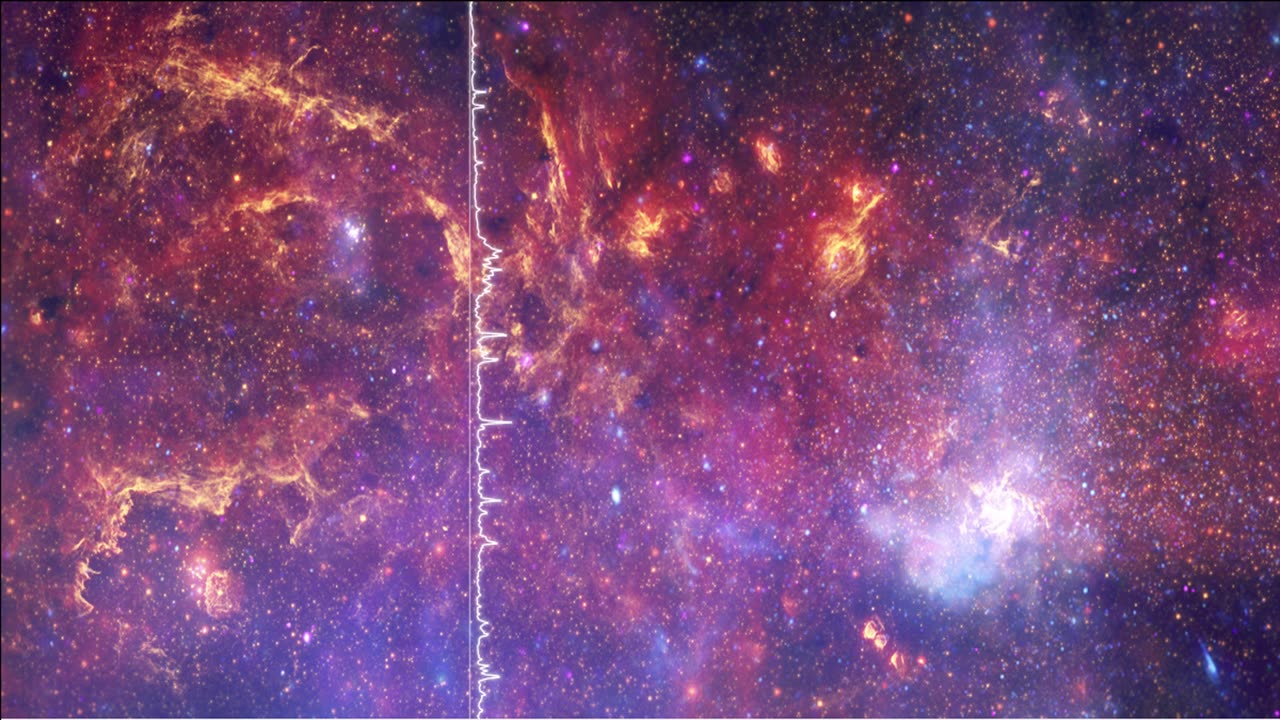Premium Only Content

Data Sonification: Sounds from Around the Milky Way
The center of our Milky Way galaxy is too distant for us to visit in person, but we can still explore it. Telescopes give us a chance to see what the Galactic Center looks like in different types of light. By translating the inherently digital data (in the form of ones and zeroes) captured by telescopes in space into images, astronomers create visual representations that would otherwise be invisible to us.
But what about experiencing these data with other senses like hearing? Sonification is the process that translates data into sound, and a new project brings the center of the Milky Way to listeners for the first time. The translation begins on the left side of the image and moves to the right, with the sounds representing the position and brightness of the sources. The light of objects located towards the top of the image are heard as higher pitches while the intensity of the light controls the volume. Stars and compact sources are converted to individual notes while extended clouds of gas and dust produce an evolving drone. The crescendo happens when we reach the bright region to the lower right of the image. This is where the 4-million-solar-mass supermassive black hole at the center of the Galaxy, known as Sagittarius A* (A-star), resides, and where the clouds of gas and dust are the brightest.
Users can listen to data from this region, roughly 400 light years across, either as "solos" from NASA's Chandra X-ray Observatory, Hubble Space Telescope, and Spitzer Space Telescope, or together as an ensemble in which each telescope plays a different instrument. Each image reveals different phenomena happening in this region about 26,000 light years from Earth. The Hubble image outlines energetic regions where stars are being born, while Spitzer's infrared image shows glowing clouds of dust containing complex structures. X-rays from Chandra reveal gas heated to millions of degrees from stellar explosions and outflows from Sagittarius A*.
In addition to the Galactic Center, this project has also produced sonified versions of the remains of a supernova called Cassiopeia A, or Cas A, and the "Pillars of Creation" located in Messier 16. In Cas A, the sounds are mapped to four elements found in the debris from the exploded star as well as other high-energy data. The distribution of silicon (red), sulfur (yellow), calcium (green), and iron (purple) are revealed moving outward from the center of the remnant, starting from the location of the neutron star, in four different directions, with intensity again controlling the volume. There is also another version with fifth audio path moving along the upper left jet.
-
 2:08:22
2:08:22
Kim Iversen
13 hours agoIs This Even Legal? Trump’s Push to End Birthright Citizenship and The Insane Plan to Move Palestinians to Indonesia
133K282 -
 1:27:06
1:27:06
Glenn Greenwald
13 hours agoMr. Tracey Goes To Washington: Inauguration Observations, Interviews & Commentary | SYSTEM UPDATE #393
165K59 -
 52:01
52:01
Tucker Carlson
17 hours agoNew York Mayor Eric Adams Sounds a Lot Like a Trump Voter
238K221 -
 2:47:25
2:47:25
Right Side Broadcasting Network
16 hours agoLIVE REPLAY: President Donald J. Trump Holds First Press Briefing Since Inauguration - 1/21/25
258K214 -
 1:08:45
1:08:45
Man in America
15 hours agoTrump UNLEASHED! Dismantling the Deep State and Restoring America
61.1K75 -
 27:22
27:22
I_Came_With_Fire_Podcast
17 hours ago🔥SPECIAL RELEASE🔥 Inflation Reduction Act: American Seniors Get SLAMMED!!
78.4K11 -
 6:25:28
6:25:28
vivafrei
15 hours agoD.C. Gulag Jan. 6 Prisoners Release Watch!
246K169 -
 1:49:14
1:49:14
Redacted News
15 hours agoTrump is Back! Congress Uncovers New Biden Crimes One Day After He Leaves D.C. | Redacted
209K276 -
 2:09:53
2:09:53
Benny Johnson
15 hours ago🚨President Trump LIVE Right Now Making MASSIVE Announcement At White House News Conference
314K438 -
 2:04:10
2:04:10
Revenge of the Cis
15 hours agoEpisode 1433: Retribution
139K21